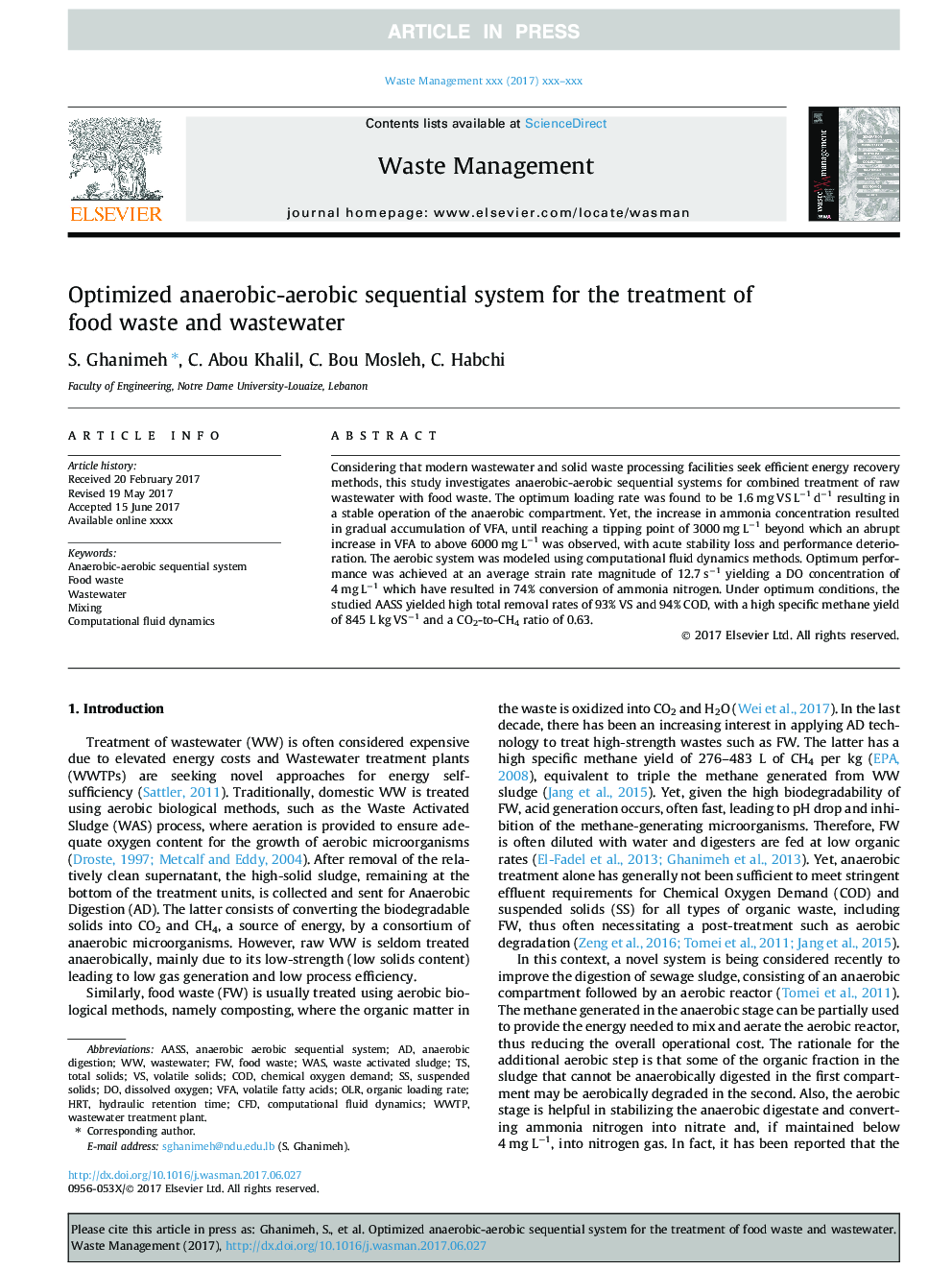| Article ID | Journal | Published Year | Pages | File Type |
|---|---|---|---|---|
| 8870387 | Waste Management | 2018 | 8 Pages |
Abstract
Considering that modern wastewater and solid waste processing facilities seek efficient energy recovery methods, this study investigates anaerobic-aerobic sequential systems for combined treatment of raw wastewater with food waste. The optimum loading rate was found to be 1.6 mg VS Lâ1 dâ1 resulting in a stable operation of the anaerobic compartment. Yet, the increase in ammonia concentration resulted in gradual accumulation of VFA, until reaching a tipping point of 3000 mg Lâ1 beyond which an abrupt increase in VFA to above 6000 mg Lâ1 was observed, with acute stability loss and performance deterioration. The aerobic system was modeled using computational fluid dynamics methods. Optimum performance was achieved at an average strain rate magnitude of 12.7 sâ1 yielding a DO concentration of 4 mg Lâ1 which have resulted in 74% conversion of ammonia nitrogen. Under optimum conditions, the studied AASS yielded high total removal rates of 93% VS and 94% COD, with a high specific methane yield of 845 L kg VSâ1 and a CO2-to-CH4 ratio of 0.63.
Keywords
Related Topics
Physical Sciences and Engineering
Earth and Planetary Sciences
Geotechnical Engineering and Engineering Geology
Authors
S. Ghanimeh, C. Abou Khalil, C. Bou Mosleh, C. Habchi,
